Should I Let Raw Meat Come To Room Temperature Before Cooking?
Oct 24, 2024
This post may contain affiliate links. Read more at our disclosure policy.
There’s a longstanding belief in many culinary circles that letting meat sit at room temperature for an hour before cooking will produce a juicier and more evenly cooked result. While this concept sounds reasonable, science and experimentation tell a different story. Let’s debunk this myth!
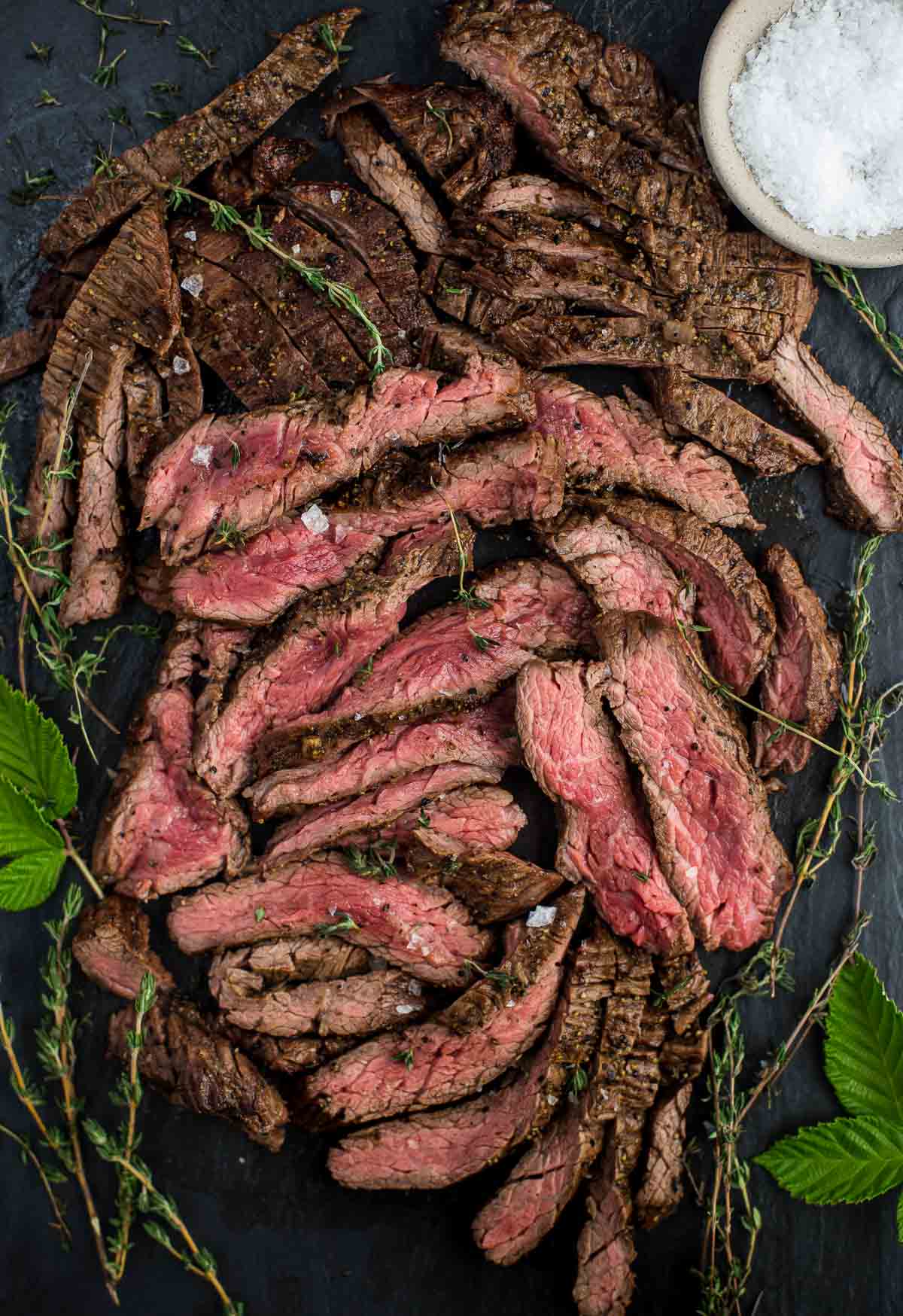
Should you allow meat to come to room temperature before grilling or smoking? The short answer is, no.
The bottom line, you are better off ensuring your cooking surface is hot and you season your meats properly.
Table of Contents
The Theory Behind Resting Meat Before Cooking
The idea is simple: The theory is that by letting meat sit at room temperature for about 30 minutes to an hour before cooking, the meat will cook more evenly. Advocates of this method believe that starting with a room-temperature piece of meat prevents the outer layers from overcooking before the center reaches the desired temperature.
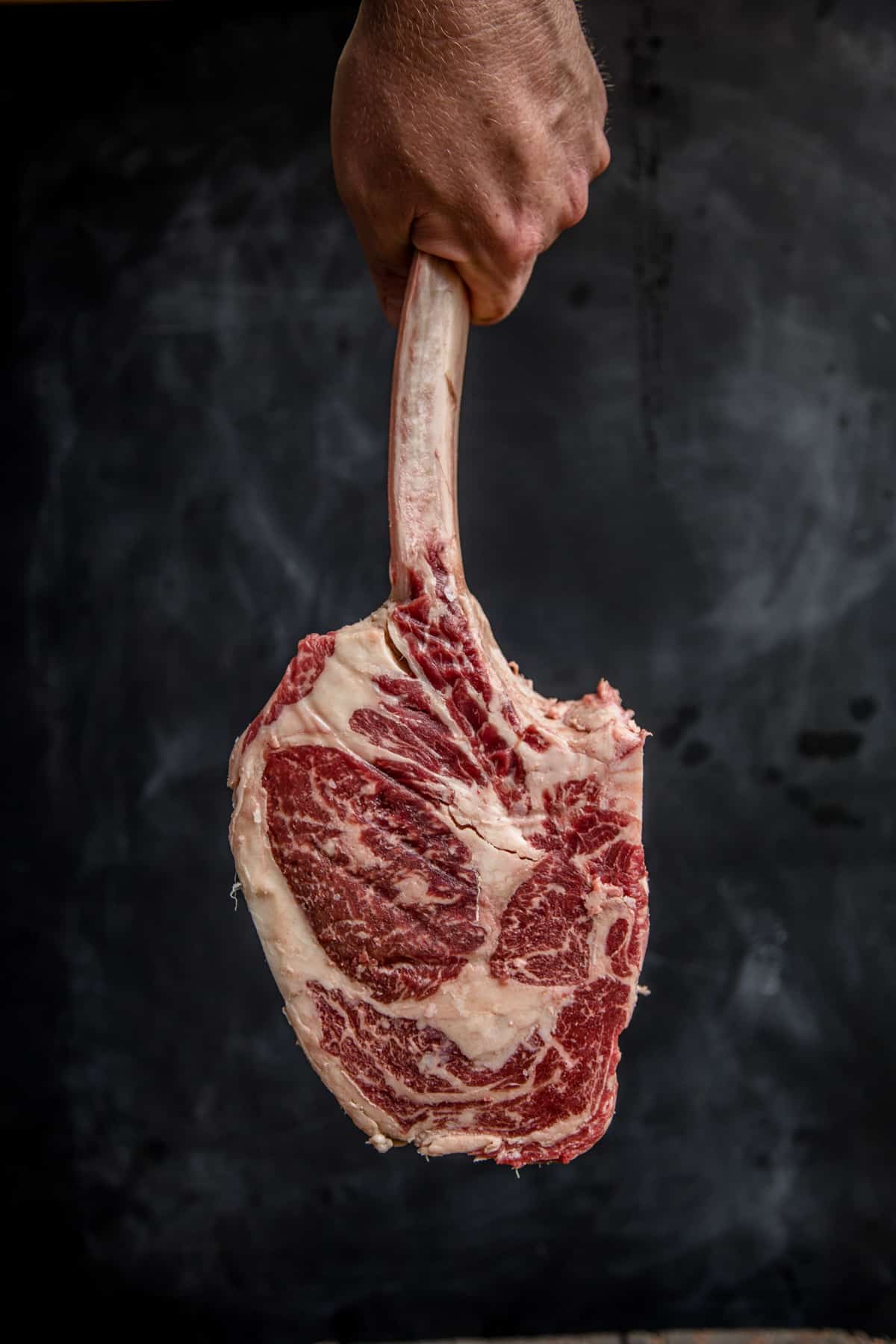
This, in turn, should yield a more uniform degree of doneness and achieve a better sear.
Why This Theory Doesn’t Hold Up
- Uneven Warming: In practice, letting meat sit out for an hour does not bring the entire cut up to room temperature. The outer layers might warm slightly, but the center remains relatively cold. The difference in temperature between a refrigerated piece of meat and one that has been left out for one hour is negligible when it comes to cooking time and uniformity.
- Safety Concerns: From a food safety perspective, allowing meat to sit out at room temperature can be risky, although the likelihood is low. Bacteria multiply rapidly at temperatures between 40°F and 140°F. So, leaving meat out for an extended period can push it into this danger zone, increasing the risk of food-borne illness.
- Cooking Science: Research conducted on this subject has shown that there is minimal difference in the cooking time or evenness of cooking between meat taken directly from the refrigerator and meat rested at room temperature.
Testing The Theory
To test the theory on steak we broke down one ribeye roll so we had the same steak from the same animal for consistency. The steaks were all 1 1/2 inches thick.
We decided to test the theory at two hours (vs one) to really see if there was any significant difference.
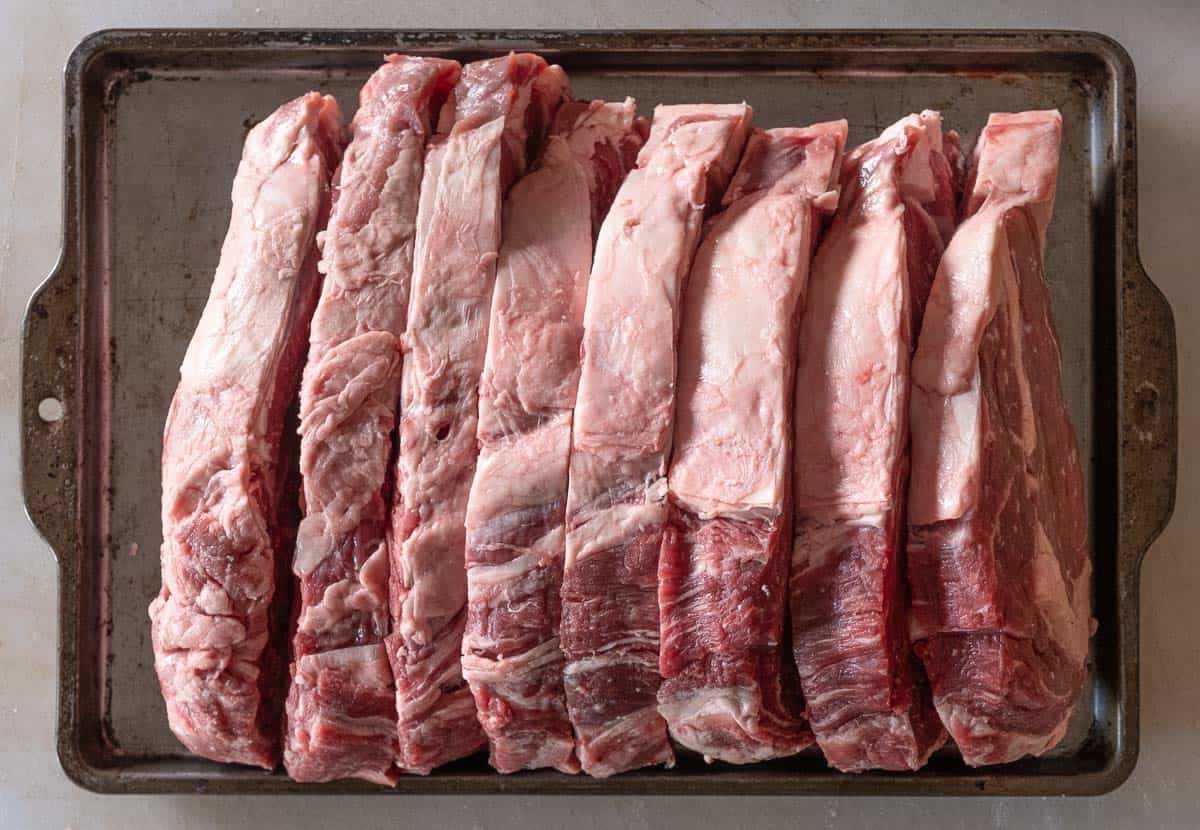
- External Temperature: We used a calibrated Thermoworks IR Thermometer to take the temperature in the center/top of the steaks in 30-minute increments over the course of 2 hours.
- Internal Temperature: We used a calibrated Thermoworks Smoke X to measure the internal temperature of these steaks in 30-minute increments over the course of 2 hours.
The ambient temperature of the room was 68 degrees Fahrenheit.
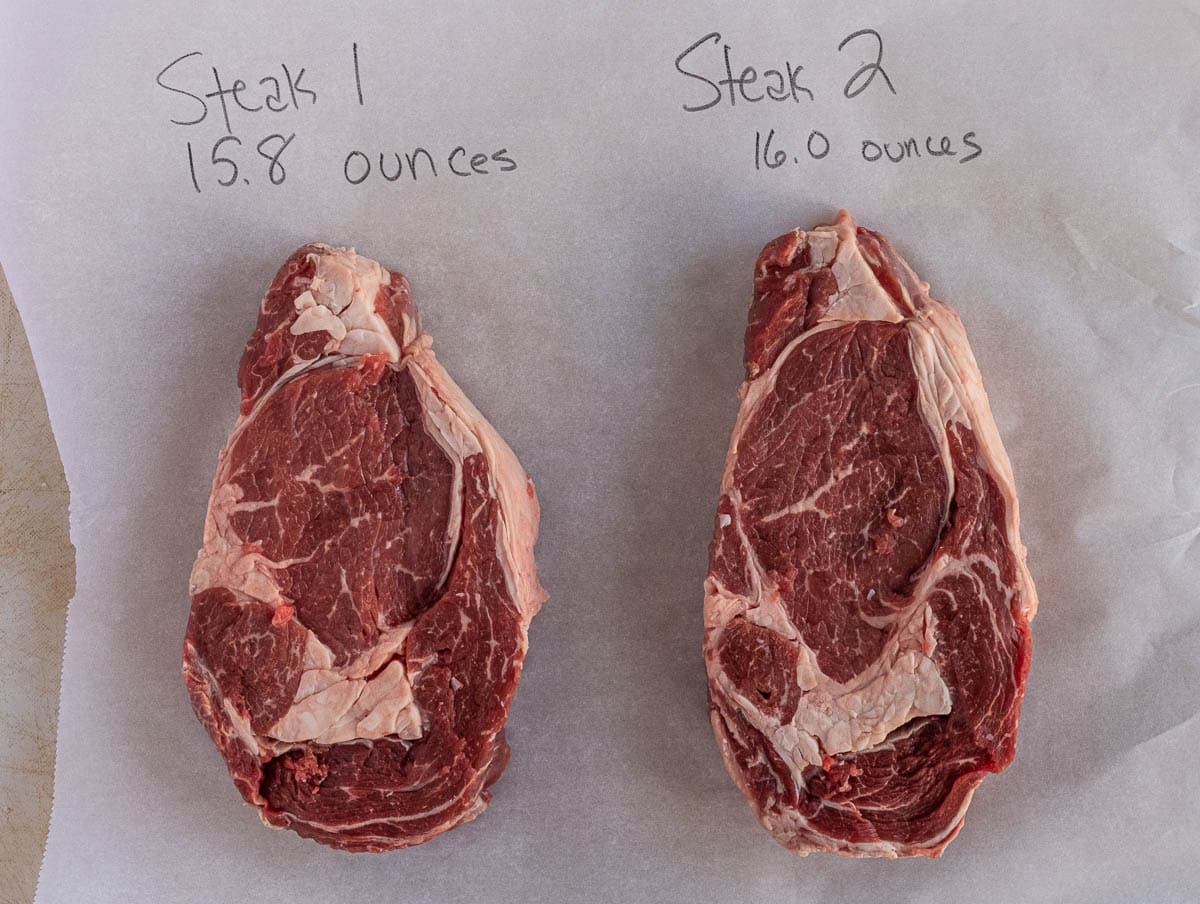
The steaks above are similar weight and thickness.
Would you like to save this?
Our Findings
We let one steak sit at room temperature for two hours (steak 1) and one we removed one straight from the refrigerator (steak 2). You can see that the steak we left out for two hours still was under the ambient temperature of the room (68 degrees).
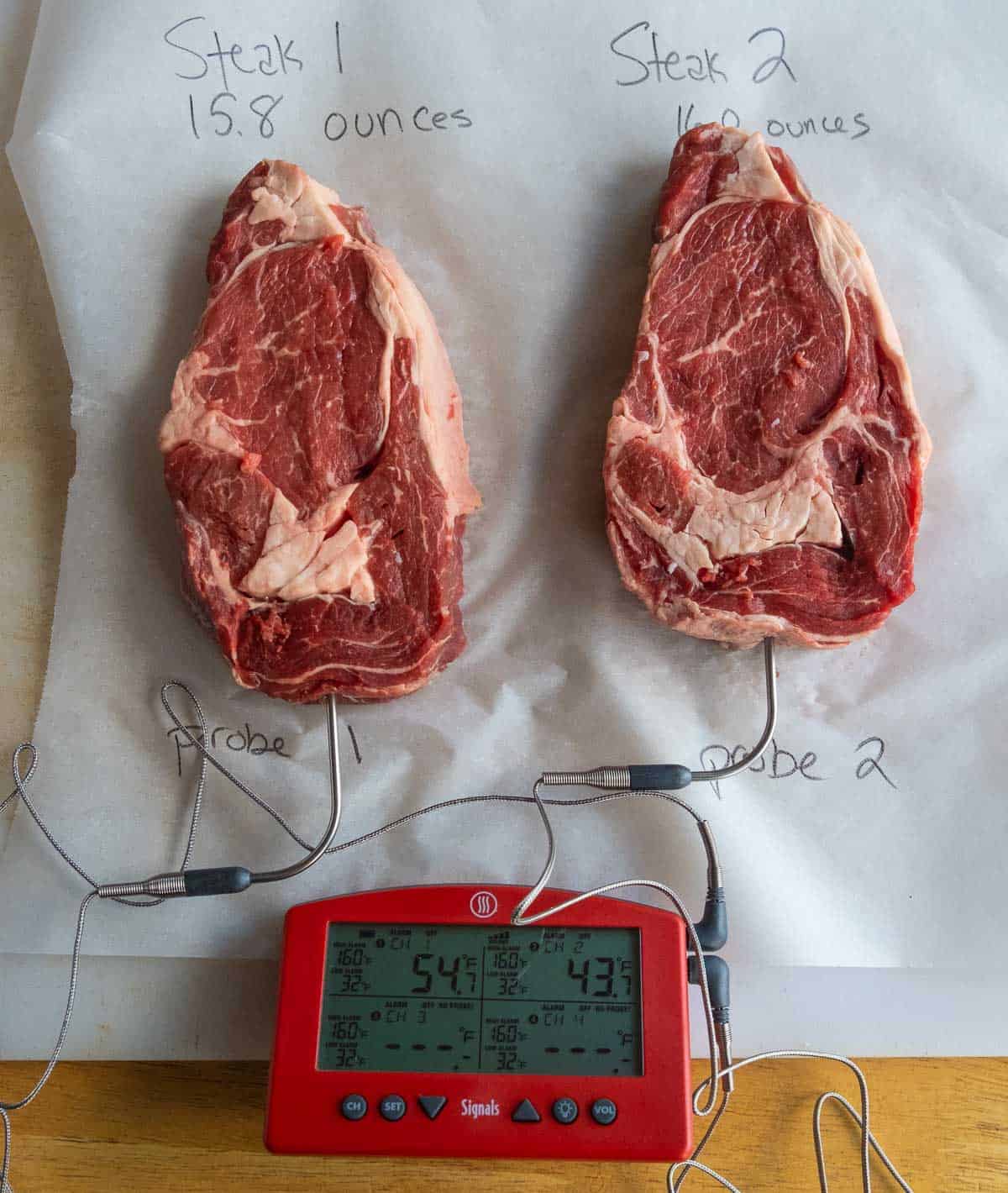
We grilled both steaks over direct heat until they reached 130 degrees F internal temperature. Steak 1 (the steak that sat at room temperature for two hours) was done one minute sooner than steak 2, but there was no material difference in the texture or the sear.
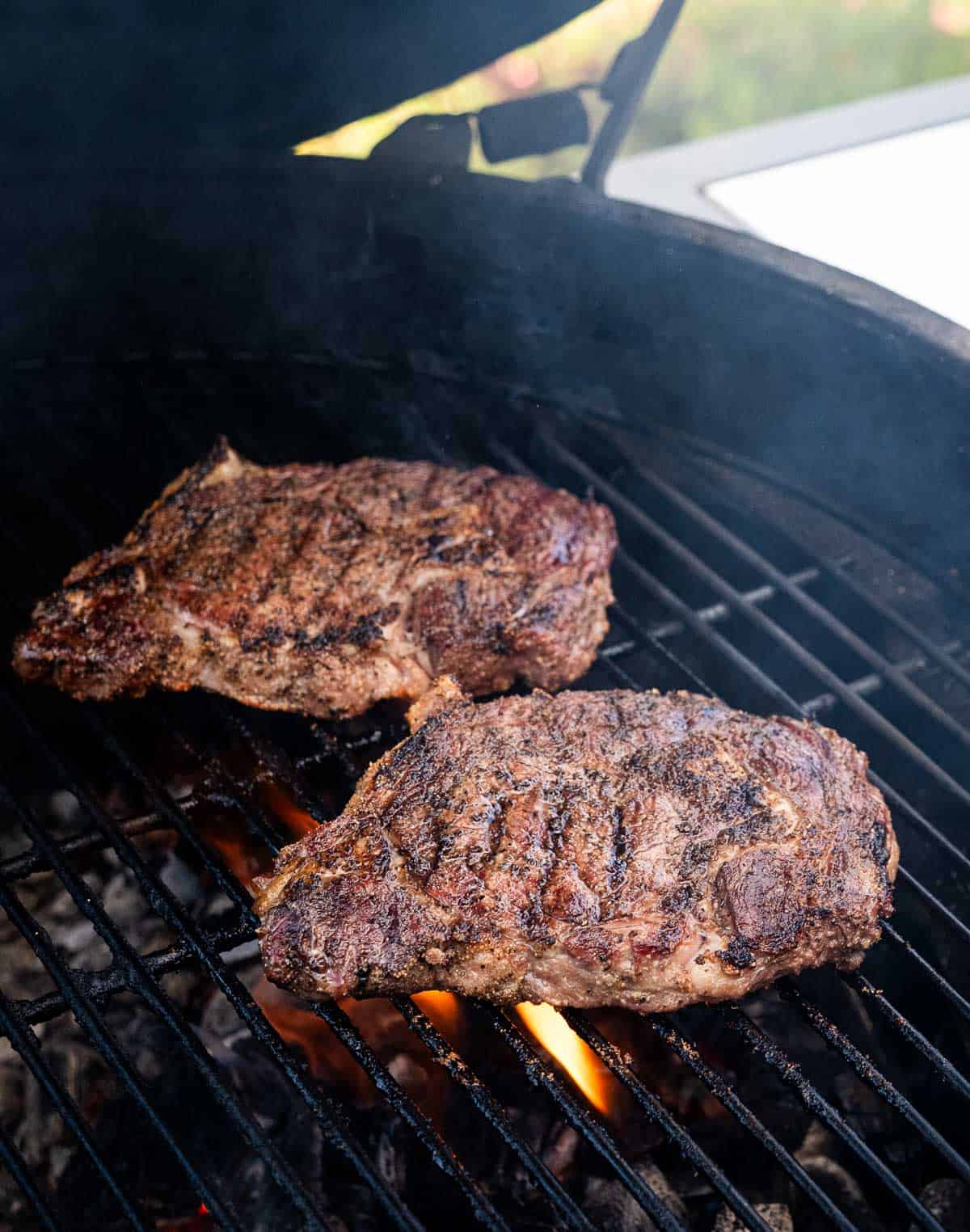
Both steaks rested for 15 minutes. When sliced into they both had the same texture and flavor.
Conclusion
As noted, there was no material change in the internal temperature of the steak or the cooking time (unless you consider one minute significant). The flavor and texture were both consistent with each other.
Therefore we found no reason to add this extra step to your cooking process. No matter the protein from chicken to lamb.
We believe there are more important factors to consider when you want perfectly cooked steak.
- Make sure your cooking surface is hot to achieve the Maillard Reaction.
- Consider slowly cooking the meat using a reverse sear method and then finish over direct cooking.
- Do not forget to rest your meat after cooking to allow for carry over cooking.
And we’re not the only ones who agree. Food & Wine came to similar conclusions as well as Serious Eats.
Practical Tips
- Make Cooking Surface is HOT: When we cater events and do cooking demos we reiterate it’s more important for the heat source to be the right temperature. If you cook at too cool of a heat source it slows the cooking and you don’t get the Maillard reaction. So be sure it’s HOT.
- Use a Meat Thermometer: One of the best ways to ensure your meat is cooked perfectly is to use a good instant read meat thermometer. This essential grilling tool will allow you to monitor the internal temperature of your meat and remove it from the heat at precisely the right moment.
- When Using Grill: Before placing your meat on the grates, ensure your grill or smoker has reached the desired temperature. A properly preheated cooking surface will sear the meat quickly, sealing in flavor.
- Don’t Overcrowd: Give your meat plenty of space on your cooking surface or grill. Overcrowding can lead to uneven cooking and make it harder to manage flare-ups or hot spots.
Frequently Asked Questions
While it’s a common belief, there’s little evidence to support this idea. The searing process is more about the moisture on the surface of the meat rather than its starting temperature. Ensuring the meat’s surface is dry will help achieve a better sear.
Many cooking myths persist because they sound logical or have been passed down through generations. However, with advances in food science, we’ve been able to test and debunk many of these myths.
Meat should be stored in the refrigerator in its original packaging until you’re ready to cook. If you’re marinating the meat, make sure it is kept in a sealed container in the refrigerator. Be sure frozen food is properly thawed prior to cooking.
While the idea of resting meat at room temperature prior to cooking might seem like a time-honored tradition, the science doesn’t support the practice. For the best results, focus on the cooking process itself and the all-important resting period after the meat comes off the heat.
Armed with knowledge and a good instant read meat thermometer, you’re well on your way to grilling or smoking perfection!
Tried this recipe? Give us a star rating and we would love to see! Mention @vindulge or use the hashtag #vindulge on all the social media handles. And consider subscribing to our newsletter where we drop all our favorite ideas and inspirations weekly.
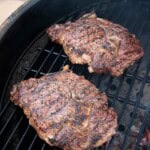




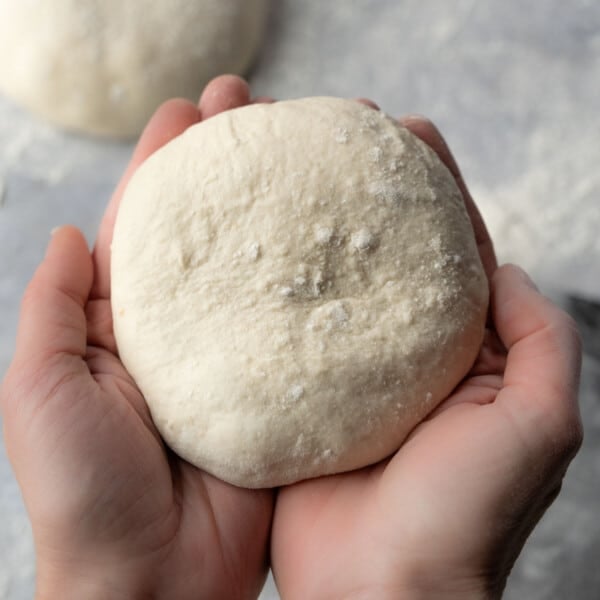

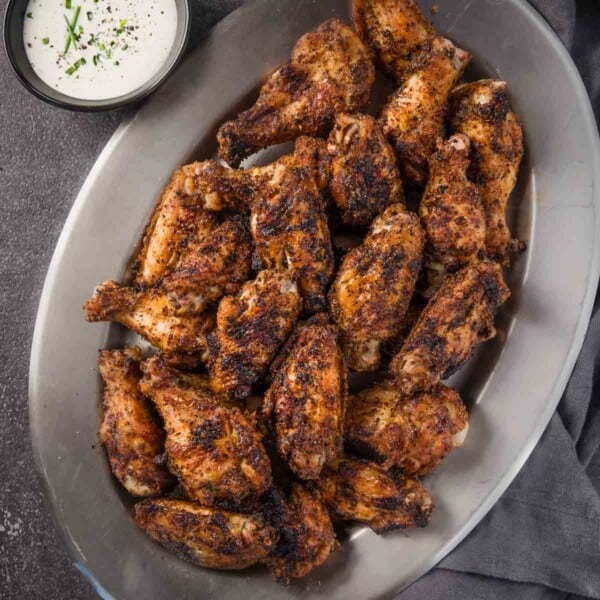
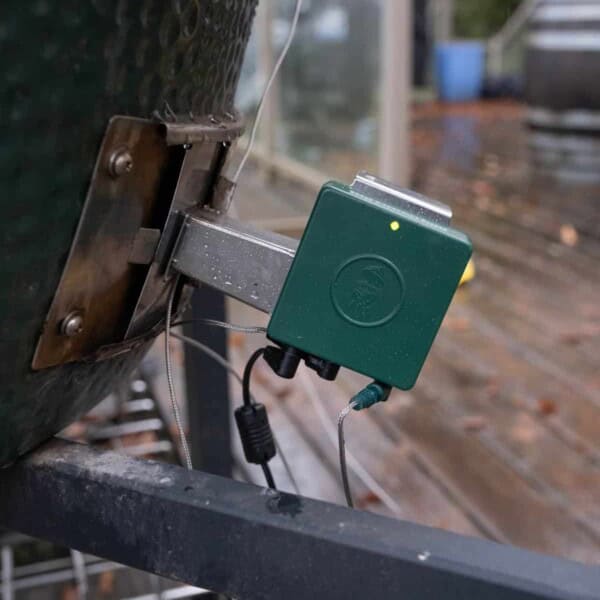

















Nice read and it was something I always thought of, but never attempted to find out. Old habits…
So now I know not to take them out first as the grill heats up!
Next time, hit me up and I’d gladly drive over to indulge in another of your steak experiments!
Absolutely you will get the next test invite!! And the right heat is the way to go!